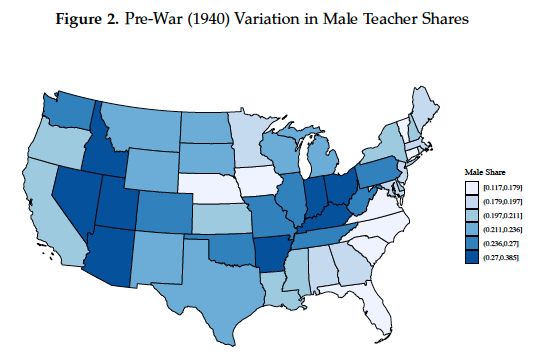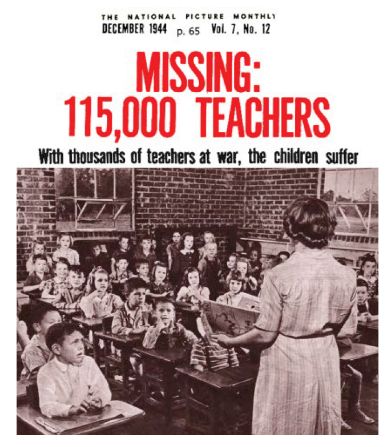Labor Economics, Economic History
See my website for other fun labor and history projects! mbbriskin.github.io
See my website for other fun labor and history projects! mbbriskin.github.io
Even temporary shocks to teacher supply can have lasting consequences on the composition and quality of the teacher workforce—and therefore on students' human capital 🧠 and economic outcomes 💰.
Even temporary shocks to teacher supply can have lasting consequences on the composition and quality of the teacher workforce—and therefore on students' human capital 🧠 and economic outcomes 💰.
1️⃣ were more likely to hire emergency teachers
2️⃣ had a decrease in the share of teachers with a college degree
1️⃣ were more likely to hire emergency teachers
2️⃣ had a decrease in the share of teachers with a college degree
In 1941, < 1 in 400 teachers held an emergency license. By 1947? 1 in every 8 teachers.
According to the NYT, some were “taxicab drivers, mechanics, telephone operators, or retired janitors.” 😳

In 1941, < 1 in 400 teachers held an emergency license. By 1947? 1 in every 8 teachers.
According to the NYT, some were “taxicab drivers, mechanics, telephone operators, or retired janitors.” 😳
For the school-aged cohorts, a 1 SD increase in missing teachers reduces
- HS graduation by 1.6 pp (2.5%)
- College graduation by 0.4 pp (3.6%)
- Weekly wage by 1.9%. That’s ~$40k in lifetime earnings for a full-time worker.


For the school-aged cohorts, a 1 SD increase in missing teachers reduces
- HS graduation by 1.6 pp (2.5%)
- College graduation by 0.4 pp (3.6%)
- Weekly wage by 1.9%. That’s ~$40k in lifetime earnings for a full-time worker.
1️⃣ states with more vs. fewer missing teachers
2️⃣ cohorts in school during the war vs. too old to be in school
I observe these school-aged cohorts, plus the earlier cohorts as adults in Census samples 1940-2000
1️⃣ states with more vs. fewer missing teachers
2️⃣ cohorts in school during the war vs. too old to be in school
I observe these school-aged cohorts, plus the earlier cohorts as adults in Census samples 1940-2000

Look at this drop in the male teacher share! The number of male teachers fell 35% from 1940-44.

Look at this drop in the male teacher share! The number of male teachers fell 35% from 1940-44.
To understand why, we also need to think about how the teacher workforce was affected.
To understand why, we also need to think about how the teacher workforce was affected.
Policymakers feared the consequences for students. So what happened to these kids?

Policymakers feared the consequences for students. So what happened to these kids?

